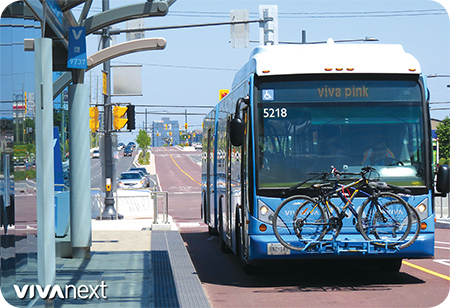
Blogpost by: Sara Grilli
In the same way people choose to fuel themselves with a variety of foods, there are many ways to fuel a vehicle. In fact, the industrialized world experimented with different fuel options such as steam and electricity for a few decades being using petroleum-fueled combustion engines to move vehicles. Over a century later alternative fuel options are on the upswing, especially for transit vehicles.
Transit already offers an environmental benefit by transporting more people with fewer vehicles, but it’s also been an early adopter when it comes to alternative fuels. According to the US-based Alternative Fuels Data Center, more than 40% of transit vehicles use them [compared to less than 10% for private vehicles].
Through research and trial and error, a few types of fuel have begun to take hold in recent years including:
Hybrid-electric
Hybrid-electric is a popular choice for transit services – for example Saskatoon Transit, and at least 30% of the TTC bus fleet. Hybrid vehicles combine internal combustion – buses are usually diesel – with electric, to save in the range of 40 – 50 % in fuel and emissions.
Compressed Natural Gas [CNG]
Some transit companies have made the fuel switch to Compressed Natural Gas [CNG]. CNG is methane under pressure, and when used in a combustion engine it produces fewer greenhouse gases than gasoline, diesel and propane.
Biodiesel and propane
There are also biodiesel and propane, and while they are less common, biodiesel has been used successfully by some European transit services, and propane is a commonfuel for school buses.
Electric
Last, but certainly not least, are electric-powered vehicles. These are becoming more popular and are considered by many transit agencies to be the future of transit. In Canada, transit fleets in Toronto, Quebec City, Montreal, Windsor and Edmonton are purchasing or operating all-electric vehicles, and York Region has electricity in mind as well.
Alternative fuels are already important for transit, and are a key part of a greener future. It may take time, but the vision is there.

One reply on “powering the future of transit”
I visited China last year, and most of their buses are pure Electric!
https://commons.wikimedia.org/wiki/File:BYDK7BusShenzhen.jpg
https://commons.wikimedia.org/wiki/File:BYDK6BusHangzhou.jpg
Having Electric Buses in York Region is exciting (and good for everyone’s health).